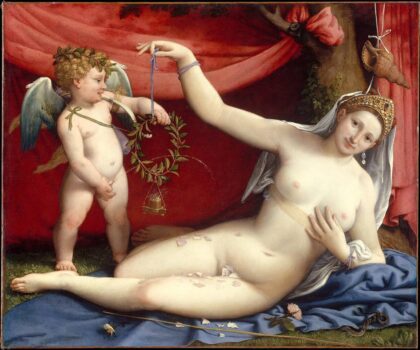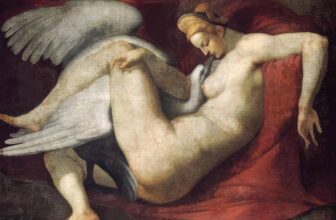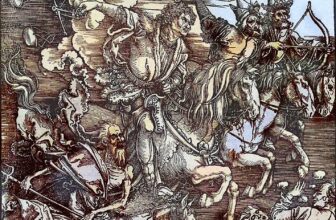Lorenzo Lotto’s Story and His Famous Paintings
Shopping Ads: Invest in Hidden Masterpiece: Rare Antique Oil Paintings For Sale. Limited Originals Available 💰😊 Are you looking for authentic hidden masterpiece? Explore old master antique oil paintings from the Renaissance and Baroque eras. From 16th-century portraits to 18th-century landscapes. Authenticity guaranteed, Old Master antique oil paintings for sale. Shop Now! 🎨 Renaissance And Baroque Art Old Master Portrait Paintings Landscape Antique PaintingsWhen we think of the great Renaissance painters, names like Leonardo da Vinci, Michelangelo, and Raphael often come to mind first. Yet, nestled among these giants is Lorenzo Lotto, a master whose work embodies a unique blend of emotional depth, psychological insight, and vivid color that has captivated art lovers and historians alike. Although not as widely recognized during his lifetime as some of his contemporaries, Lotto’s paintings have steadily gained acclaim for their profound humanity and originality.
This post explores the fascinating story of Lorenzo Lotto, delves into his most famous paintings, examines what makes him a distinctive figure in Renaissance art, and traces the locations where his works can be admired today.
Who Was Lorenzo Lotto?
Lorenzo Lotto was born around 1480 in Venice, Italy, during the height of the Renaissance. Unlike the more famous Venetian painters like Titian, Lotto’s style was marked by a distinctively personal and introspective approach. His career spanned several Italian cities, including Bergamo, Treviso, and the Marche region, where he found patrons eager for his unique vision.
Unlike some of his contemporaries who worked primarily for powerful courts or churches, Lotto often worked independently or for smaller patrons. This gave him the freedom to experiment with psychological realism and emotional nuance in portraiture and religious works. His art often reveals a sense of melancholy or introspection, offering a window into the minds and souls of his subjects, a quality that was revolutionary at the time.
The Story of Lorenzo Lotto
Lorenzo Lotto’s life was marked by both artistic brilliance and personal challenges. Early in his career, he trained in Venice and absorbed influences from Giovanni Bellini and Giorgione. However, he soon developed a style that veered away from the idealized beauty typical of Venetian art, focusing instead on individual personalities and inner emotional worlds.
Lotto moved frequently throughout his life, never settling permanently in one place. After Venice, he worked extensively in Bergamo, where he produced some of his most acclaimed religious paintings and altarpieces. His ability to capture complex human emotions, such as anxiety, devotion, and contemplation, set him apart from other painters of the period.
Despite his talents, Lotto struggled to achieve lasting fame or secure the patronage of major courts. His introspective and sometimes eccentric nature may have contributed to this. Later in life, he turned towards religious devotion, joining the Dominican order as a tertiary and eventually spending his final years in relative obscurity, working on commissions for smaller churches and private patrons.
What Is Lorenzo Lotto Known For?
Lorenzo Lotto is primarily known for:
Psychological Portraiture: Lotto’s portraits are renowned for their psychological depth. Unlike the idealized depictions common in the Renaissance, his subjects often display vulnerability, anxiety, or introspection, making them feel remarkably human and relatable.
Expressive Religious Paintings: Lotto’s religious works are filled with emotional intensity and often feature unusual compositions and vivid colors that reflect the spiritual turmoil or devotion of the figures depicted.
Innovative Use of Color and Light: His paintings showcase a vibrant palette and subtle light effects that enhance the emotional atmosphere of the scenes.
Narrative Detail: His compositions often include symbolic objects or background details that deepen the story being told.
Lorenzo Lotto’s Most Famous Paintings
Lorenzo Lotto’s body of work is both rich and varied. Here are some of his most famous paintings that exemplify his mastery:
1. The Portrait of Andrea Odoni (1527)
This portrait of the Venetian collector Andrea Odoni is celebrated for its psychological insight and rich symbolism. Lotto depicts Odoni surrounded by classical sculptures and artifacts, highlighting his erudition and refined taste. The portrait captures a thoughtful, slightly melancholic expression, emphasizing the sitter’s intellectual depth.
2. The Mystic Marriage of St. Catherine (c. 1523-1526)
A stunning religious painting, this work shows the mystical marriage between St. Catherine of Alexandria and the Christ child. Lotto’s use of vibrant colors and delicate facial expressions conveys a powerful spiritual intimacy.
3. Portrait of a Woman Inspired by Lucretia (c. 1530)
This compelling portrait is thought to depict a woman embodying Lucretia’s virtues of chastity and honor. The sitter’s direct gaze and strong character make this painting a striking example of Lotto’s psychological portraiture.
4. The Recanati Annunciation (c. 1534)
Located in the Marche region, this painting is renowned for its dramatic use of light and the emotional tension between the Virgin Mary and the angel Gabriel. It stands out for its narrative complexity and symbolic details.
5. St. Jerome in Penitence (c. 1506)
One of Lotto’s early works, this painting shows the saint in deep contemplation and solitude, a theme Lotto would explore repeatedly through his career.
How Many Paintings Did Lorenzo Lotto Create?
Lorenzo Lotto’s surviving oeuvre comprises approximately 70 to 80 paintings attributed confidently to him. Many of his works are portraits and religious commissions, including altarpieces and frescoes. Because Lotto moved frequently and sometimes worked on smaller commissions, some of his works remain less documented or have been lost.
Despite the relatively modest number of works compared to some Renaissance masters, each painting is packed with emotional and narrative depth, making his artistic contribution significant.
What Is the Most Expensive Painting of Lorenzo Lotto?
As of current art market records, Lorenzo Lotto’s “Portrait of a Man” (circa 1545) is among the most valuable works, having been sold or valued at prices reaching into the millions of dollars/euros at auction or private sales. However, unlike the works of Leonardo or Raphael, Lotto’s paintings rarely appear at auction, making it difficult to pinpoint exact highest sale prices.
Generally, Lotto’s portraits tend to be the most valuable due to their rarity and psychological depth. Museums prize his religious altarpieces for their historical and devotional significance, while private collectors covet his intimate portraits.
Where Can You See Lorenzo Lotto’s Paintings?
Lorenzo Lotto’s paintings are primarily housed in Italian museums, churches, and private collections. Key locations to view his work include:
1. Pinacoteca di Brera, Milan
Houses several of Lotto’s notable portraits and religious works.
2. Museo Correr, Venice
This museum features some of Lotto’s early works and offers insight into his Venetian beginnings.
3. Accademia Carrara, Bergamo
Bergamo was one of Lotto’s major centers of activity, and the Accademia Carrara holds important altarpieces and portraits by him.
4. Pinacoteca Civica, Recanati
Home to the famous Recanati Annunciation and other religious works.
5. Churches in the Marche and Bergamo Regions
Many of Lotto’s altarpieces and frescoes remain in situ in churches he decorated, such as Santa Maria dei Carmini in Venice and Sant’Alessandro in Colonna in Bergamo.
Lorenzo Lotto’s Legacy
Though Lorenzo Lotto did not achieve the widespread fame of some of his Renaissance peers during his lifetime, his legacy has grown immensely. Today, art historians celebrate him as a pioneering figure in the development of psychological portraiture and emotional expression in Renaissance art.
Lotto’s work bridges the gap between the formal idealism of the High Renaissance and the more expressive, personal styles that would flourish later, such as in the Baroque period. His attention to the inner life of his subjects anticipated modern portraiture’s focus on personality and mood.
Moreover, Lotto’s colorful palette, inventive compositions, and willingness to depict human vulnerability make him a uniquely compelling figure whose work continues to inspire artists and viewers.
Lorenzo Lotto’s paintings offer a rare glimpse into the complex emotional worlds of his subjects, whether they be devout saints, noble patrons, or everyday people. His journey across Renaissance Italy, his struggle for recognition, and his unwavering dedication to artistic truth make his story as rich and nuanced as his canvases.
If you ever have the chance to stand before a Lotto painting, you will see more than just brushstrokes and color, you will experience a dialogue across centuries with a man who dared to paint the soul.




